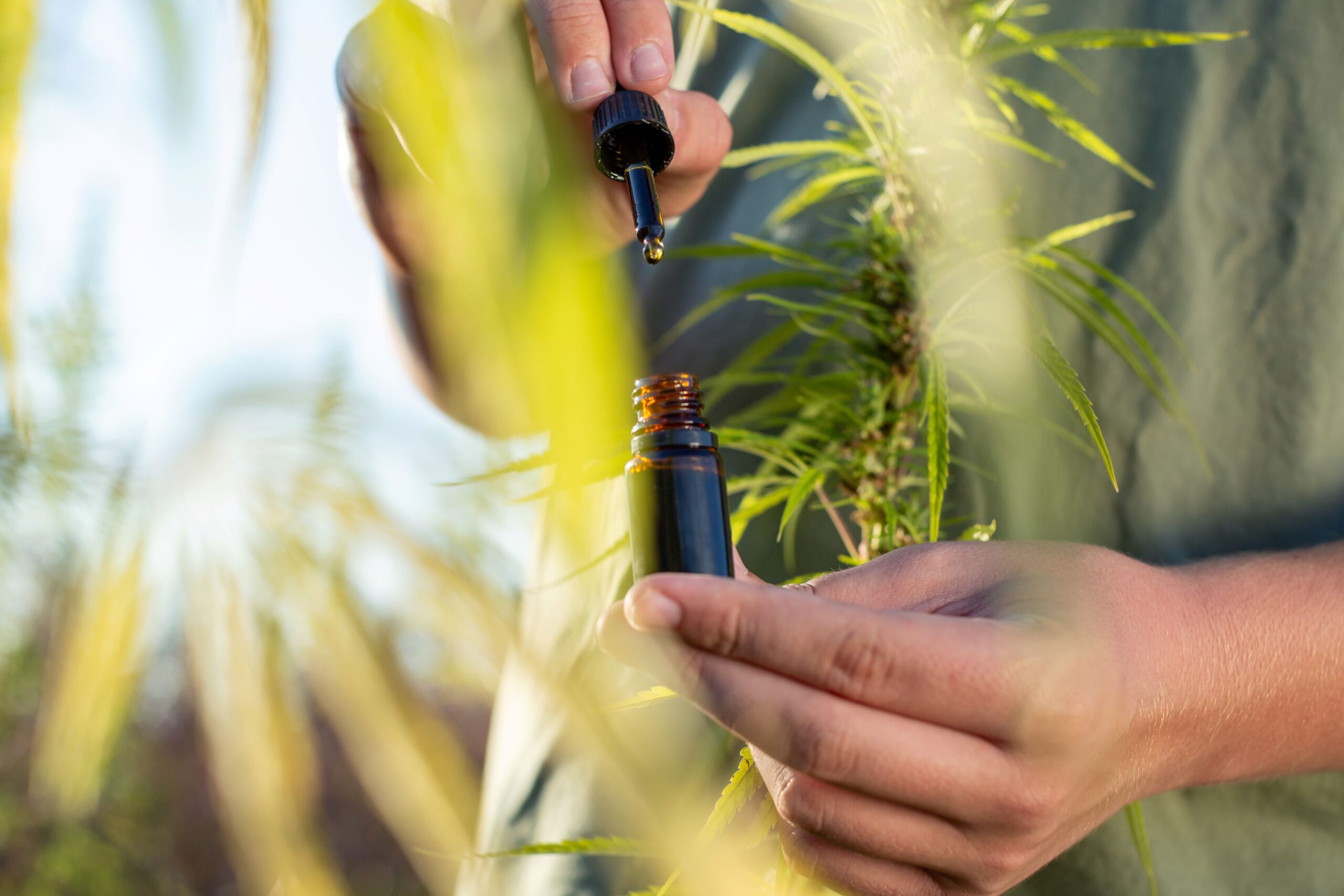
Hemp oil and CBD oil, although they both come from the same plant, are two completely different products in their use, conditions and starting material from which they are made.
Nowadays, despite the progress of scientific research and National and International Regulations, the consumer risks being confused and the aim of this article is to explain the differences to allow a mindful and responsible choice.
Hemp oil
We call “hemp oil” the oil that comes from the seed produced by the plant. Considered a true superfood for its properties and nutrients, the seed is regulated as a food and it’s now available in most of the biggest supermarkets’ chains, either whole or split or as part of a variety of meals such as salads and soups. Hemp seeds are also cold-pressed to produce hemp oil and its residue is considered a flour, even if it’s a bran, and is used for many oven-baked products, sweet or savoury, depending on regional varieties. Today it’s easy to find in restaurants, caffès and supermarkets products with hemp that range from biscuits to pizzas, that can become “taralli” from Puglia, “piadine” in Emilia-Romagna, and so on.
Properties and uses of hemp oil
Hemp oil, besides its use in cooking (as a cold dressing and not for cooking because its properties would be altered) is used as a base for cosmetic products for the whole body, but also for industrial use as a combustible, one of the most popular uses on a domestic level in our country before fossil fuels.
On the food level it’s suggested as a substitute for the most common dietary supplement used for essential fatty acids: fish oil. In addition to being of plant origin and therefore not subjected to sea and ocean pollutants with mercury, dioxin and toxic components assimilated by the fish themselves, we must emphasize the nutritional value of this food: the perfect ratio of Omega-6 and Omega-3 fatty acids of 3:1, in addition to the high value of tocopherols (antioxidants) and high amounts of polyunsaturated and saturated fatty acid ratio (>10) which are ideal to counteract the onset of inflammatory and coronary diseases. Furthermore, this oil contains the acid γ-linolenic, which plays an important role in the physiology and pathophysiology of the skin. These last two elements, in addition to high levels of vitamin E – which combats free radicals responsible for the ageing of the skin – and the B group vitamins (in particular B1, B2, B6), make it a great product also from a cosmetic point of view. Hemp oil today is in fact used as a starting point to produce cosmetic lines, primarily body wash, shampoos, face and body creams.
Scientific publications support its use in conditions of dried skin such as psoriasis and xerosis and it’s also used to relieve skin irritations and to avoid or reduce scarring. It can also be used topically in case of skin’s redness applying it locally and massaging it in, or on damp hair as a revitalising mask.
What is CBD oil instead?
CBD is a molecule situated in the inflorescence of cannabis. It’s one of the 120 cannabinoids identified today and it’s under the magnifying glass of scientific research for its multiple therapeutic properties. CBD is in fact an active pharmaceutical, a pharmacological principle found already in two registered drugs used in the USA, Europe and other countries. Not only, because CBD is also a cosmetic ingredient and since October 2021 it has been added to CosING, the European database which contains them all. On the food level, instead, if in the USA it’s largely used in food and beverage, in Europe and in Great Britain a regulation is due as Novel Food, that category of products and edible substaces for which “significant” consumption cannot be demonstrated on the 15th of May 1997 in the European Union (UE), the date of entry into force of Regulation (EC) No. 258/97 governing.
When talking of CBD oil today, in general, two main products can be found: Isolated CBD oil, generally under crystal form diluted in hemp oil, olive oil or MCT and CBD full-spectrum oil, phytocomplex in Italian, meaning it contains besides CBD all the other therapeutic substances present in the plant at time.
[H2] Properties and use of CBD oil
CBD is at the centre of many scientific studies which test its therapeutic properties in an increasingly wide range of pathologies. The benefits of CBD praised by scientific publications range from treating pain and anxiety, inflammatory, autoimmune and neurological diseases and also in psychiatric conditions like depression. To offer some examples: it is used today by itself or in synergy with other cannabinoids or other drugs in inflammatory and autoimmune diseases such as rheumatoid arthritis, in neurodegenerative diseases such as Alzheimer and Parkinson, in neurological dieases such as epilepsy, in the neuropsychiatric conditions such as autism, for bowl conditions such as Crohn’s disease and even the dermatological sector.
But the cannabinoid is becoming increasingly popular even outside the medical world, for example in wellness and welfare more generally. On a cosmetic level CBD is functional because it acts on the skin endocannabinoid system, provided that it is present in substantial percentages and that the product is well formulated. In general it has an anti-inflammatory and soothing effect and helps in the first steps of pain, because on our skin we have nociceptors which are the pain and itch receptors; in this case CBD has a different effect, because it starts turning off these first signals. It can be added to derma-functional cosmetics to work in synergy with skin therapies for psoriasis and eczema. It has an antibacterial effect and regulates sebo production and because of this it is used in treating acne, dermatological diseases – in this case also with medical devices and not only cosmetics – such as atopic dermatitis.

